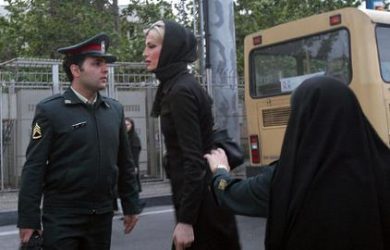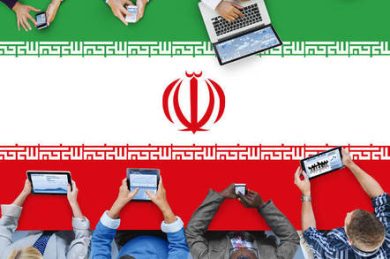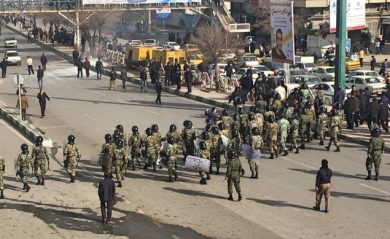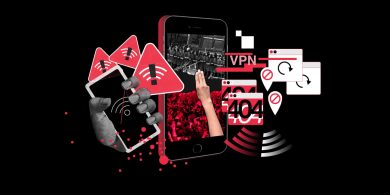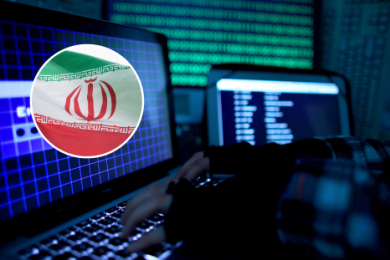The Islamic Revolutionary Guard Corps (IRGC) plays a central role in enforcing media censorship and suppressing free speech in Iran. Through its control over state media, digital surveillance, and harsh repression of independent voices, the IRGC stifles dissent and shapes public narratives to maintain the regime’s power. This censorship system not only silences opposition but also restricts access to information, limiting the rights and freedoms of ordinary Iranians. This article examines the methods the IRGC employs to control the flow of information, the impact on Iranian society, and the global response to these violations of free speech.
1. The IRGC’s Control Over Media
The IRGC uses both direct and indirect means to control state-owned and independent media outlets. This allows the regime to craft narratives that reinforce its ideological agenda while discrediting dissent.
A. State Media Monopoly
• The Iranian government controls major media outlets, including IRIB (Islamic Republic of Iran Broadcasting), the primary broadcaster for television and radio.
• These outlets promote pro-regime propaganda, glorifying the IRGC’s military activities and portraying critics as foreign agents or terrorists.
B. Suppression of Independent Journalism
• Independent journalists are arrested, intimidated, and subjected to harsh prison sentences for reporting on sensitive issues such as protests, corruption, and human rights abuses.
• Many independent media organizations have been shut down or forced into self-censorship to avoid retaliation.
2. Digital Censorship and Surveillance
The IRGC has developed a sophisticated system of digital censorship to monitor and control online communication, effectively limiting Iranians’ access to uncensored information.
A. Internet Blackouts
• During times of political unrest, such as the 2019 fuel protests and the 2022 Women, Life, Freedom protests, the regime imposes nationwide internet shutdowns.
• These blackouts prevent protesters from sharing videos and testimonies with the outside world, isolating them from global support.
B. Content Filtering and Website Blocking
• The IRGC blocks access to foreign news websites, social media platforms (such as Twitter, Facebook, and Telegram), and human rights organizations.
• Iranians must rely on VPNs and proxy servers to bypass these restrictions, often at great personal risk.
C. Cyber Surveillance
• The IRGC’s cyber units monitor social media, messaging apps, and email accounts to identify activists, journalists, and dissidents.
• Those identified are often subjected to arrests, interrogations, and forced confessions.
3. Tactics to Silence Dissent
In addition to controlling the media, the IRGC employs tactics designed to intimidate and suppress anyone who challenges the regime’s narrative.
A. Arrests and Imprisonment
• Journalists, bloggers, and social media users who criticize the government face arbitrary detention.
• Notable cases include journalists who have been imprisoned for exposing human rights violations and corruption within the IRGC.
B. Harassment and Threats
• Activists and their families are often harassed by IRGC agents. Tactics include threatening phone calls, public defamation, and intimidation.
• Many victims report that their personal information was leaked or used to spread false accusations against them.
C. Propaganda and Disinformation
• The IRGC spreads disinformation through state-run media and social media bots to discredit opposition movements.
• Activists are frequently accused of working with foreign intelligence agencies, undermining their credibility within Iran.
4. Impact on Iranian Society
The IRGC’s control over media and free speech has profound consequences for freedom of expression, social cohesion, and mental health in Iran.
A. Erosion of Trust
• The constant flow of propaganda and disinformation has led to widespread mistrust in both state institutions and media outlets.
• Many Iranians seek alternative sources of information, often risking legal consequences by accessing banned websites.
B. Fear and Self-Censorship
• Journalists and citizens alike practice self-censorship to avoid surveillance and retaliation.
• Fear of arrest discourages many from participating in political activism or public discussions.
C. Mental Health Struggles
• Constant harassment and intimidation have taken a psychological toll on activists, journalists, and their families.
• Survivors of torture and prolonged detention often suffer from anxiety, depression, and post-traumatic stress disorder (PTSD).
5. Global Response to IRGC Censorship
Countries and international organizations have condemned the IRGC’s suppression of free speech and implemented measures to hold the regime accountable.
A. Sanctions on Media Control
• The United States, European Union, and Canada have imposed sanctions on Iranian officials and entities involved in censorship and cyber surveillance.
• These sanctions target state-run media outlets, telecommunications companies, and cyber units affiliated with the IRGC.
B. Advocacy by Human Rights Organizations
• Groups such as Reporters Without Borders, Amnesty International, and Human Rights Watch regularly document violations of press freedom in Iran.
• These organizations advocate for the release of imprisoned journalists and the protection of digital freedom.
C. Digital Security Initiatives
• International organizations and tech companies provide cybersecurity training and tools to help Iranian activists protect their online communications.
• Efforts to develop secure communication platforms and VPN services have helped activists bypass censorship.
6. Stories from Victims of Censorship
Personal testimonies reveal the devastating effects of IRGC censorship on individuals and their families.
A. Zahra’s Story: Silenced for Reporting
Zahra, a journalist, was arrested after covering protests in Tehran.
• “They confiscated my equipment and accused me of spreading lies. I spent months in solitary confinement.”
B. Reza’s Story: Targeted for Social Media Posts
Reza, a university student, was arrested for posting anti-regime content on Instagram.
• “They forced me to delete my account and sign a confession. I fear they are still watching me.”
7. Recommendations for Countering Censorship
A. Strengthen International Pressure
• Governments should increase diplomatic pressure on Iran to respect freedom of expression and allow independent media to operate.
B. Support Independent Media
• Funding for Persian-language media outside Iran can provide citizens with access to uncensored news and reliable information.
C. Expand Digital Security Programs
• Activists need access to encrypted communication tools and digital security training to evade IRGC surveillance.
Conclusion
The IRGC’s control of media and suppression of free speech are key tools of its authoritarian rule. By silencing dissent and spreading propaganda, the regime isolates Iranians from the global community and stifles efforts for reform. Global solidarity, advocacy, and digital support are critical to challenging these violations and promoting freedom of expression in Iran.
Join Our Newsletter!
Stay informed with the latest updates, news, and ways to take action in the fight for justice and global security. Sign up now to get updates delivered straight to your inbox!

